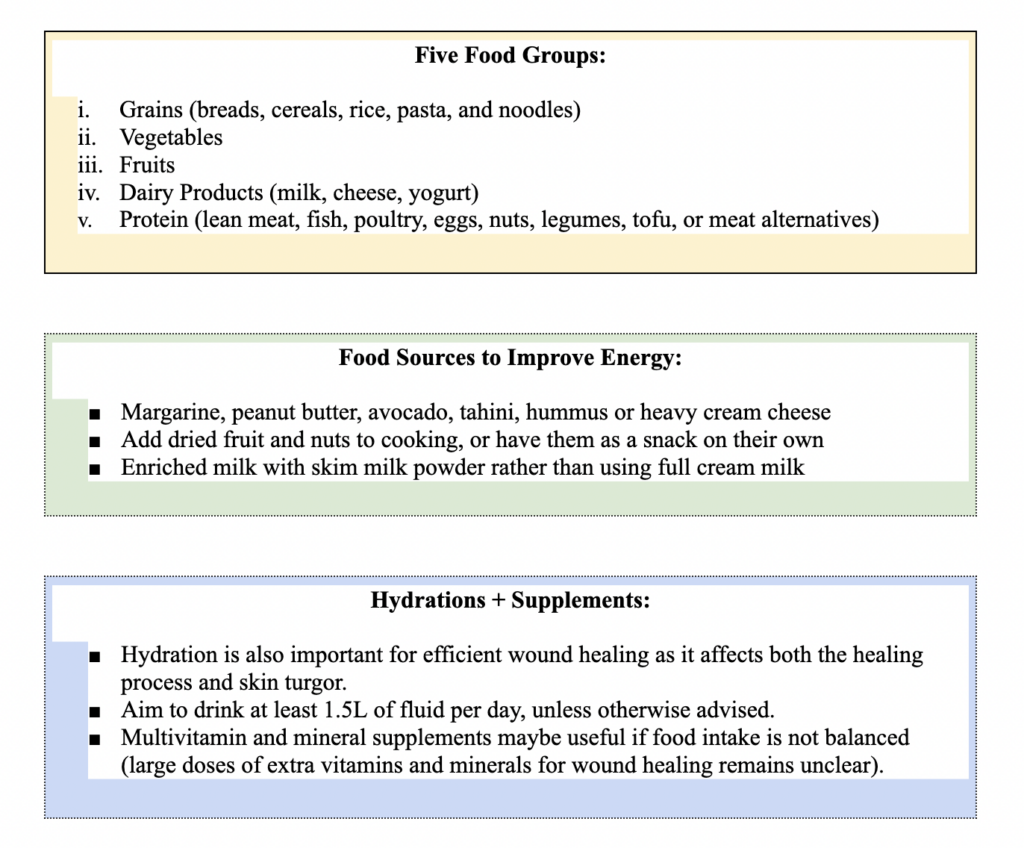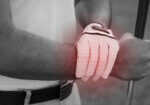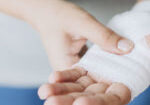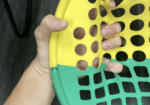By: Maddie Mott
Wound healing (healing hand therapy) involves a complex series of interactions between different cell types, cytokine mediators, and the extracellular matrix with its four basic stages including hemostasis, inflammation, proliferation, and remodeling (Mackay & Miller, 2003). Because successful wound healing requires adequate blood and nutrients to be supplied to the site of damage, the overall health and nutritional status of our patients directly influence the outcomes of their tissues healing or their tissues becoming permanently damaged. Wound repair must occur in a physiologic environment that supports tissue repair with studies showing that a diet deficient in protein, vitamins, and minerals can lead to poor wound healing (Mackay & Miller, 2003). Additionally, studies have found that maintaining an adequate intake of protein is especially important as it is used to build, maintain, and repair body tissues (Cleveland Clinic, 2017).
As healthcare practitioners, it is important that we recognize when someone has a wound or an infection that they will need additional protein, calories, and nutrients. We must also know relevant food sources which provide those nutrients. In a nutshell, healthy eating for wound healing includes choosing a wide variety of foods from each of the five food groups, consuming additional protein, and increasing energy intake (National Institutes of Health, n.d.). Some strategies to increase protein intake are by incorporating protein foods at each meal and as snacks. Furthermore, the amount of energy the body needs can increase when someone has a wound. Some strategies to increase energy levels could include keeping ready-to-eat meals and snacks handy at all times, eating smaller but more frequent meals throughout the day, and drinking fluids that provide energy such as milk, juice, or soft drinks rather than tea, coffee, and water (National Institutes of Health, n.d.).

High Protein Foods Include:
• Meat, fish and chicken
• Eggs
• Dairy products (milk, cheese, yogurt)
• Beans, legumes, nuts and seeds
• Meat alternatives (tofu, vegetarian sausages)
You May Need Extra Energy If:
• You are underweight or you are losing weight without trying
• You are unable to eat enough due poor appetite or nausea
• You are recovering from trauma or surgery

References
Eating well for wound healing – National Institutes of Health. (n.d.). Retrieved March 8, 2022, from https://www.nih.org/documents/Wound-Healing_Nutrition-2021.pdf
Mackay, D., & Miller, A. (2003, December). Nutritional support for wound healing: alternative medicine review. Journal of Clinical Therapeutic. Retrieved March 5, 2022, from https://www.researchgate.net/profile/Alan-Miller-3/publication/8977467_Nutritional_Support_for_Wound_Healing/links/5702a76c08aea09bb1a30144/Nutritional-Support-for-Wound-Healing.pdf
Nutrition tips to improve wound healing. Cleveland Clinic. (2017). Retrieved March 5, 2022, from https://my.clevelandclinic.org/health/articles/11111-nutrition-guidelines-to-improve-wound-healing
2 Comments
Leave a Comment
More To Read
Hand Therapy Marketing 101
Marketing 101 – 5 Tips for Your Therapy Clinic Confession: I hate marketing. It’s my least favorite part of my job. It is so hard to open yourself up to that much rejection but still stay positive. It feels like the professional version of blind dating, except the other person probably already has a significant…
Read MoreWhich is better for DeQuervain’s: Splinting or Injection?
Rapid Review Cavaleri, R., Schabrun, S. M., Te, M., & Chipchase, L. S. (2016). Hand therapy versus corticosteroid injections in de Quervain’s disease treatment: A systematic review and meta-analysis. Journal of hand therapy: official journal of the American Society of Hand Therapists, 29(1), 3–11. https://doi.org/10.1016/j.jht.2015.10.004 The Skinny: DeQuervain’s Tenosynovitis is a stenosing tenosynovial inflammation affecting the…
Read MoreThe 4 Stages of Simple Wound Care in Hand Therapy
Wound care is messy. It can be intimidating and scary. With so many variations of wounds (for example, white skin around wound) and so many products out there it is hard to know what to use, when to use it, and how to use it. If you go to a wound care conference, you’ll spend most…
Read MoreTop 5 DIP Flexion Exercises
By: Tori Rhodes Lately, we’ve had a handful of patients roll through our clinic with pretty significant limitations to DIP flexion. So, we’ve collected a selection of go-to exercises for these individuals. We’ve included a few of those here. From cat bites and fracture sites to mallet fingers and skin grafts, many individuals who are…
Read MoreSign-up to Get Updates Straight to Your Inbox!
Sign up with us and we will send you regular blog posts on everything hand therapy, notices every time we upload new videos and tutorials, along with handout, protocols, and other useful information.







Very informative, well written and concise. Great topic.
Very informative and useful, we all should be cognizant of how nutrition affects healing.